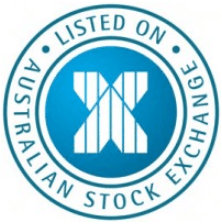Chris Weston is Chief Market Strategist at IG Markets
One thing we have learnt this year is that geo-political shocks will happen from time to time; however they seem to provide a reason for traders to cover short positions and re-initiate longs, with the mantra ‘climbing the wall of worry’ holding true.
There have been some strong moves lower of late in the energy complex, with Brent crude at a 14-month low. While Kurdish troops seem to be taking back key assets, the falls have been assisted by increased production out of Libya. Ultimately however, the falls in WTI and Brent would be helping sentiment given the positive translation effect felt by the end consumer.
Company earnings remain the clincher for money managers, and with bond yields so low in many developed markets, equities as an asset class still remain fairly attractive. Despite a 4.4% pullback in late July, we currently have the S&P 500 1% from the 1991 all-time, while the NASDAQ broke out yesterday and is at the highest level in 14 years. Potentially staying long continues to be the right view in my opinion and the only thing that could cause a 10% or greater correction in US and potentially here in Australia will be another taper tantrum caused by a significant sell-off in the US bond market.
What will cause a 10% correction in US markets?
Is this achievable? It doesn’t feel like it is going to happen soon, and certainly no one is expecting the Jackson Hole Symposium to be a platform to announce another major policy change. It’s certainly interesting to see strong selling coming into the US ten-year treasury at 2.30%, which is the 50% retracement on the May 2013 taper tantrum, where the market moved from 1.61% to 2.99% in 87 sessions. What is important (and St Louis Fed president James Bullard May pointed this out late last week) is that the market just isn’t positioned for a move in short-term rates, or at least rhetoric to that effect. The Fed funds future (an interest rate future) is pricing in short-term rates to increase to 65 basis points by December 2015. This pales in comparison to the Federal Reserve’s own median forecast of 1.12%.
Obviously this view is exaggerated by some rather extreme views from the hawkish contingent, but if trading is about finding mispricings in markets, then this has to be one of the most glaring and concerning issues around.
Certainly the Fed will have to manage this pricing dislocation perfectly to avoid a repeat of last May, and in theory could play into a stronger USD, with diverging ‘real’ yields relative to that of Japanese government bonds the main driver. A simple sense check highlights that USD/JPY actually fell last May, with traders seeking the sanctuary of the JPY during this period. Still, a repeat would throw up the prospect of increased BoJ action in October or beyond, with the key differential being that the Fed would not be undergoing quantitative easing this time around. Hence, I feel this time would be different and suggest a higher USD/JPY, with the Nikkei clearly the market traders would want to own.
It’s been a fairly upbeat day in Asia; while some have expressed concern around a further negative turn in Chinese housing momentum, this hasn’t really dented sentiment with the CSI 300 flat on the day. Chinese earnings are in full focus, with the big five banks reporting this week, so we could some increased volatility, although both the CSI 300 and the broader Shanghai Composite have very low correlations with other markets, other than the Hang Seng.
ASX honing in on the recent highs
The ASX 200 has pushed up 0.6%, although this masks the fact that 15.4 points came out of the market due to CBA paying A$2.18 cents. The bulls clearly have their eyes set on the recent high of 5644, but the way earnings are shaping up and the underlying momentum seen of late it feels like we could see a new high this week.
There seems to be three main themes shaping up for traders. Take a cautious stance on high valuation names (as seen in JHX, REA and CRZ); be optimistic on the stocks with high short interest (COH and today in ARI) and feel confident in owning the companies returning cash to shareholders (CSL, TLS and SUN). It will therefore be interesting to see if BHP can join this latter group in its full-year numbers after the Australian equity market closes.
European markets should find a continuation of the short-term upside with US futures seeing some strength today. The eyes on the market will be on inflation, both in the US and UK, with modest moves lower expected. In the US we also get July housing starts and building permits, which look set to be favourable for the USD given the snapback likely to be seen. USD/JPY would benefit from good housing data and seems to be the trade to be long this week, with flows suggesting a move to the top of the recent range of 103 could be on the cards.
